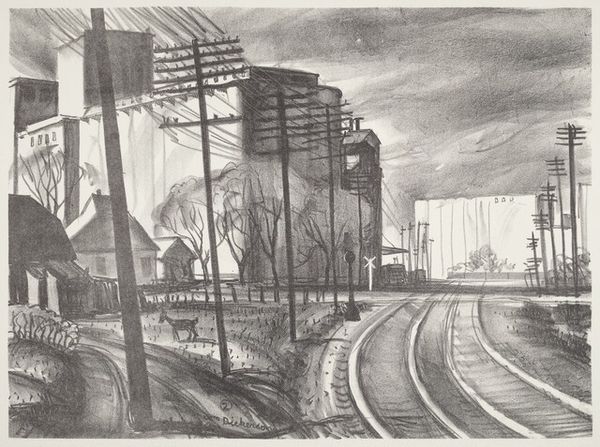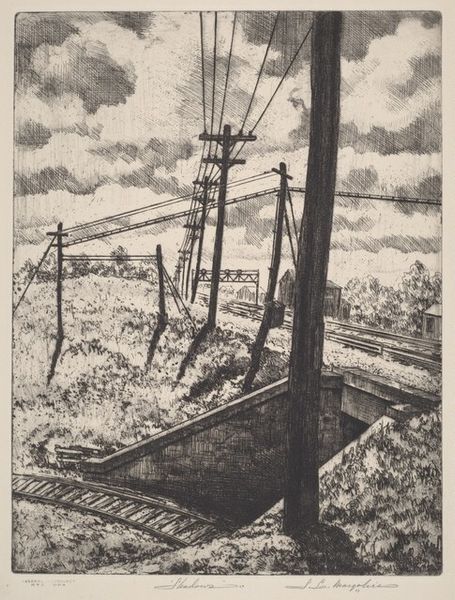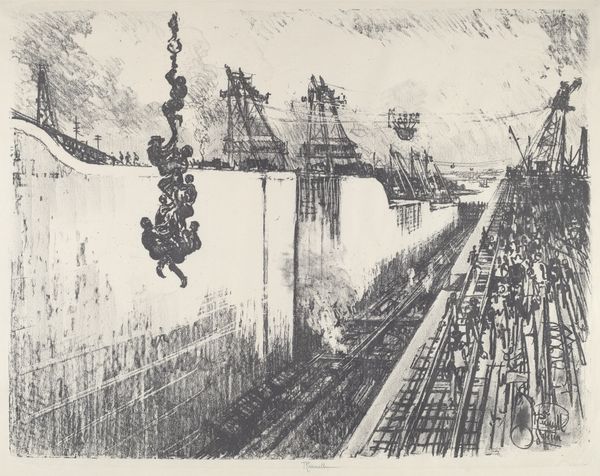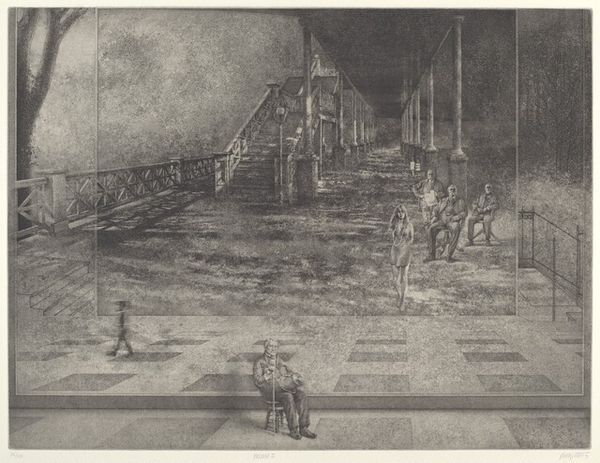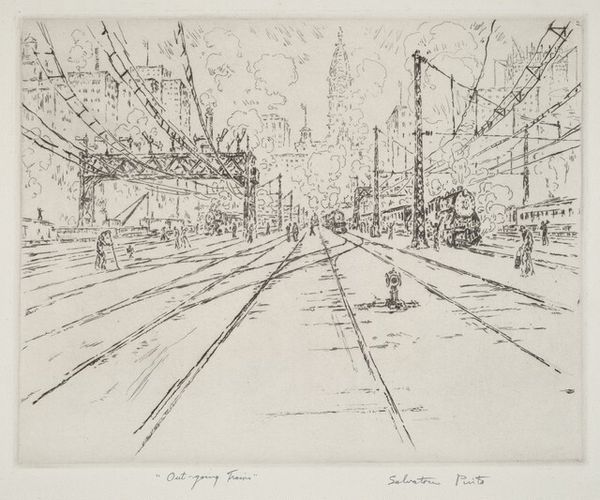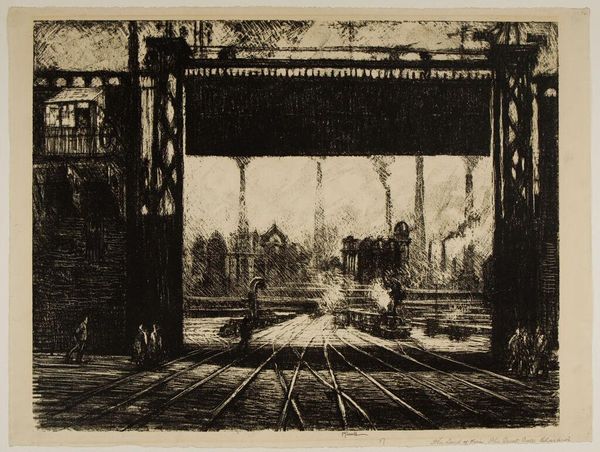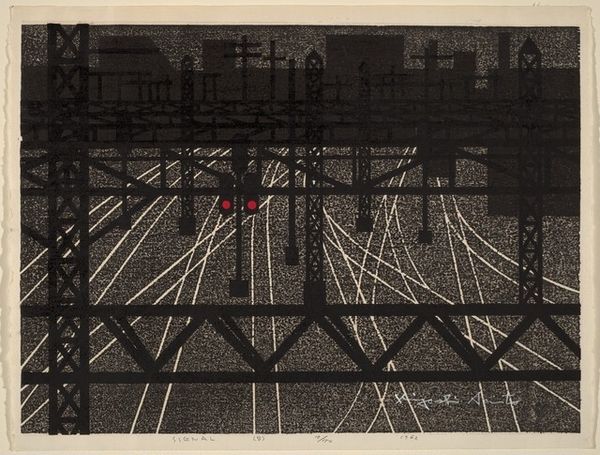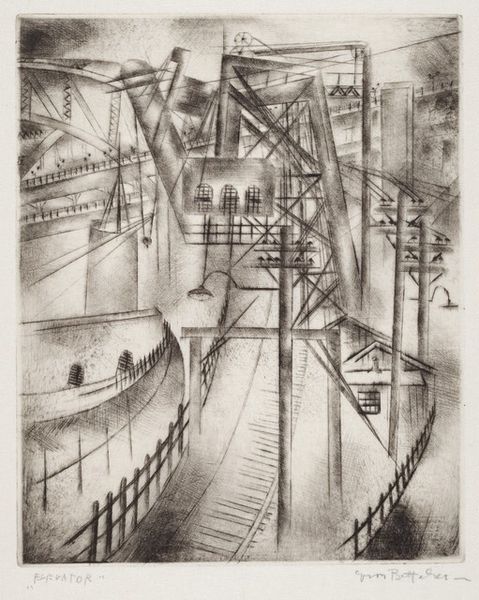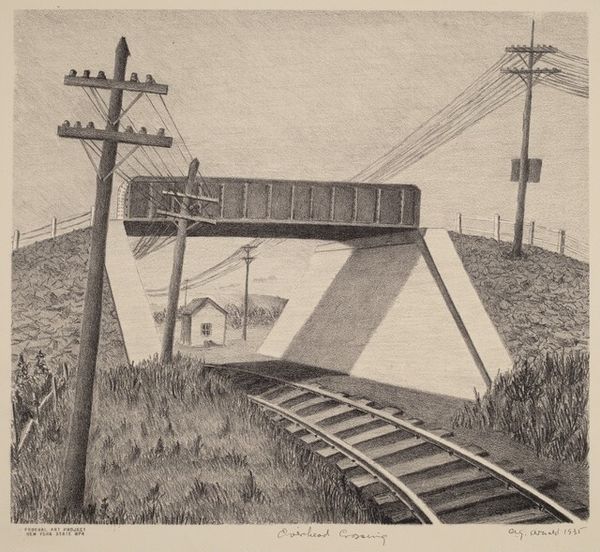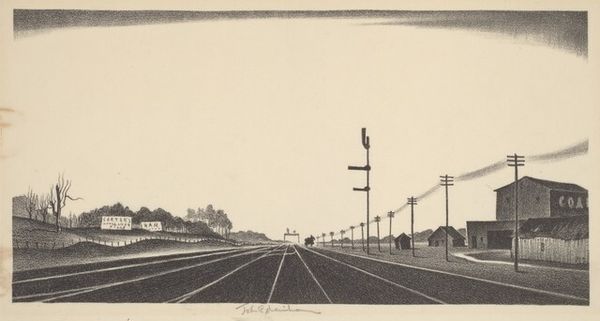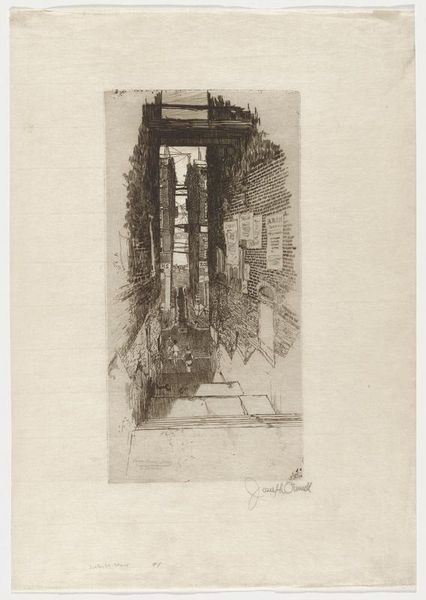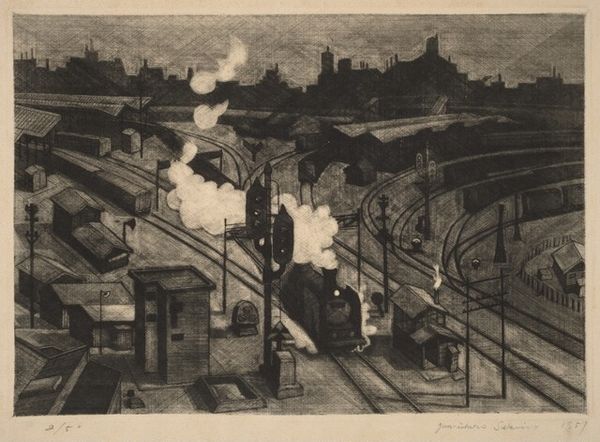
drawing, print, pencil, graphite
#
drawing
# print
#
charcoal drawing
#
pencil drawing
#
geometric
#
pencil
#
line
#
graphite
#
cityscape
#
graphite
#
modernism
#
realism
Copyright: National Gallery of Art: CC0 1.0
Editor: This graphite drawing from around 1930, titled "Stop 8" by Mildred Waltrip, captures a cityscape, almost like a view from the end of the line. It's quite stark, dominated by the tracks and looming signal. How do you interpret this work? Curator: Intriguing piece. Notice how Waltrip orchestrates a play of geometric forms. The converging railway lines establish a rigid perspective, countered by the intricate network of overhead wires, like a veil across the sky. Consider how the sharp, linear qualities are essential in rendering what could easily devolve into merely sentimental subject matter of a lonely city, transforming the seemingly mundane into a meditation on urban geometry. Does that linearity perhaps, become a language itself? Editor: I see what you mean! The lines do create a strong sense of depth and a slightly unsettling feeling, but how does that inform our viewing of the entire piece, given the subject is commonplace and bland? Curator: The very ‘commonplaceness’ and ‘blandness’ you point out can be read through semiotics. These mundane details create signs, not for straightforward narratives but for formalistic arrangements that elevate our cognitive experiences, creating meaning and structure in the work and as well, prompting us to engage with how those objects might represent a city's loneliness through composition and aesthetic qualities rather than simply illustrating a literal cityscape. Editor: That's fascinating! So, the "Stop 8" sign isn't just a sign, but a deliberate mark creating formal elements in the broader scheme. Curator: Precisely. Waltrip is less interested in literal representation and more engaged with orchestrating form. Consider how light and shadow are rendered, creating a unified and deeply structured work, with subtle gradients across the flat sky contrasted by the dense blacks and mid-tones down the receding perspective of the railway lines and their features. Editor: I never would have looked at it that way. I now view not only its intrinsic forms but also see how it makes a language through them. Thanks for highlighting these aspects! Curator: An object lesson on the structural reading of art. Thank you for asking and opening the channels for thought to run anew.
Comments
No comments
Be the first to comment and join the conversation on the ultimate creative platform.
